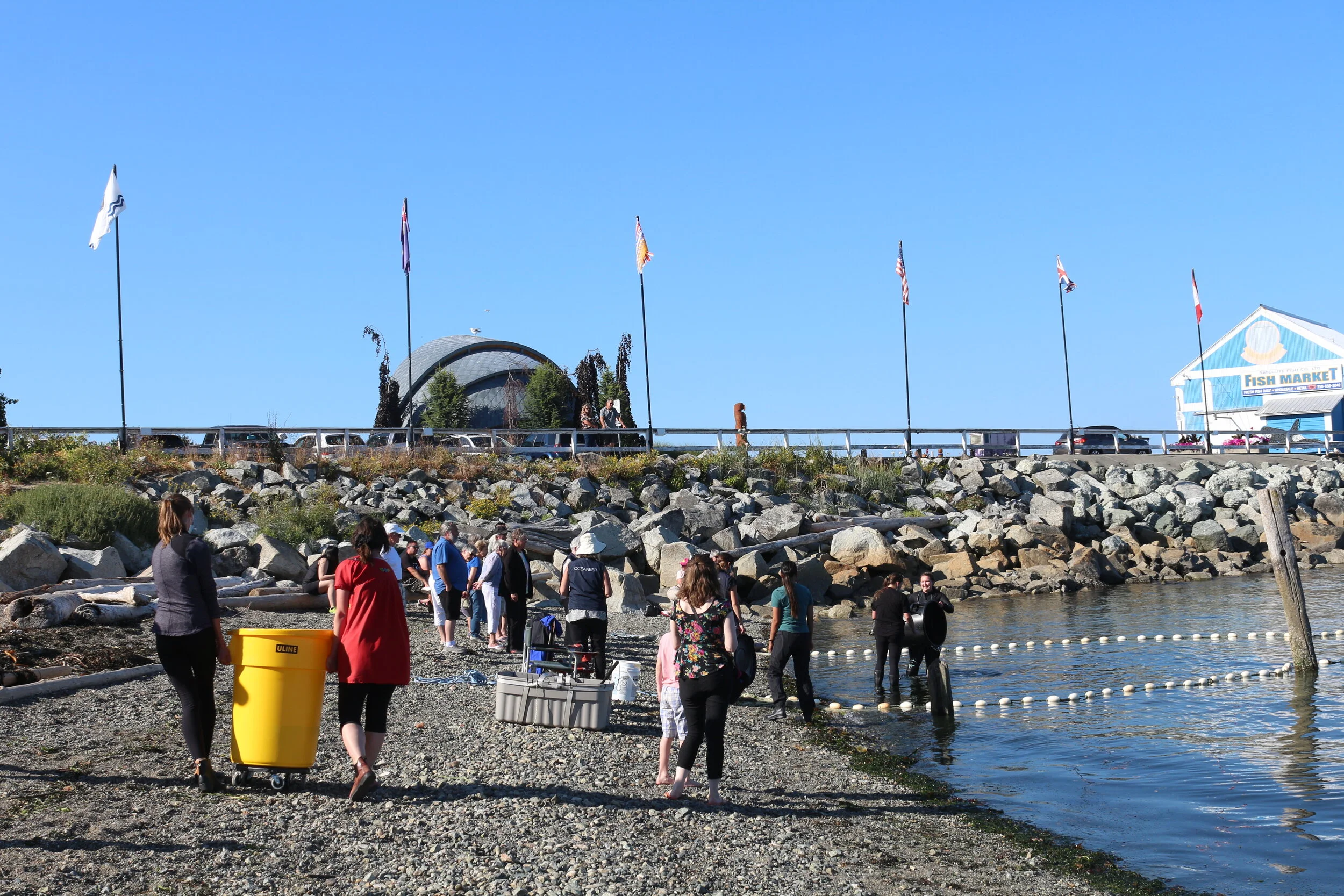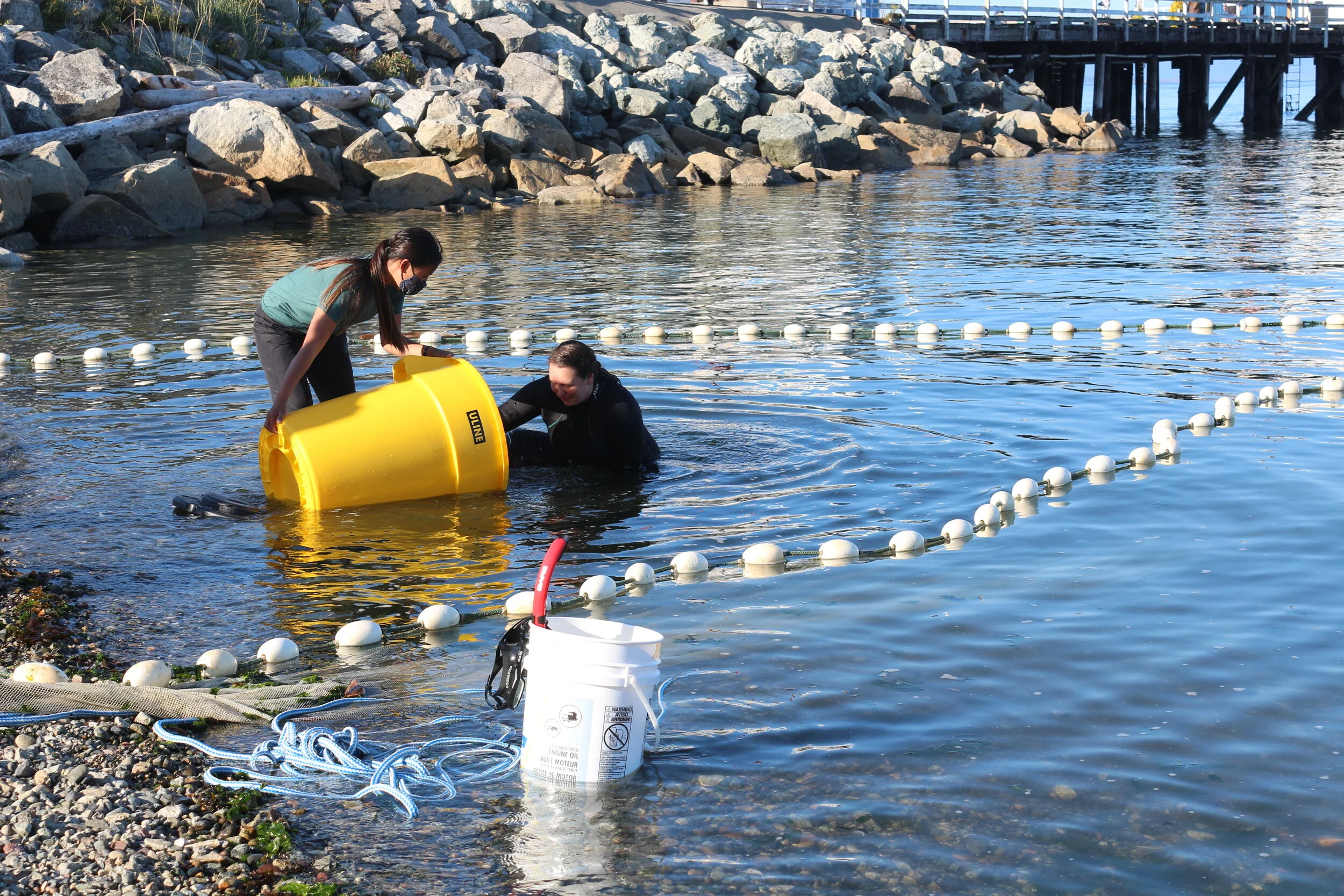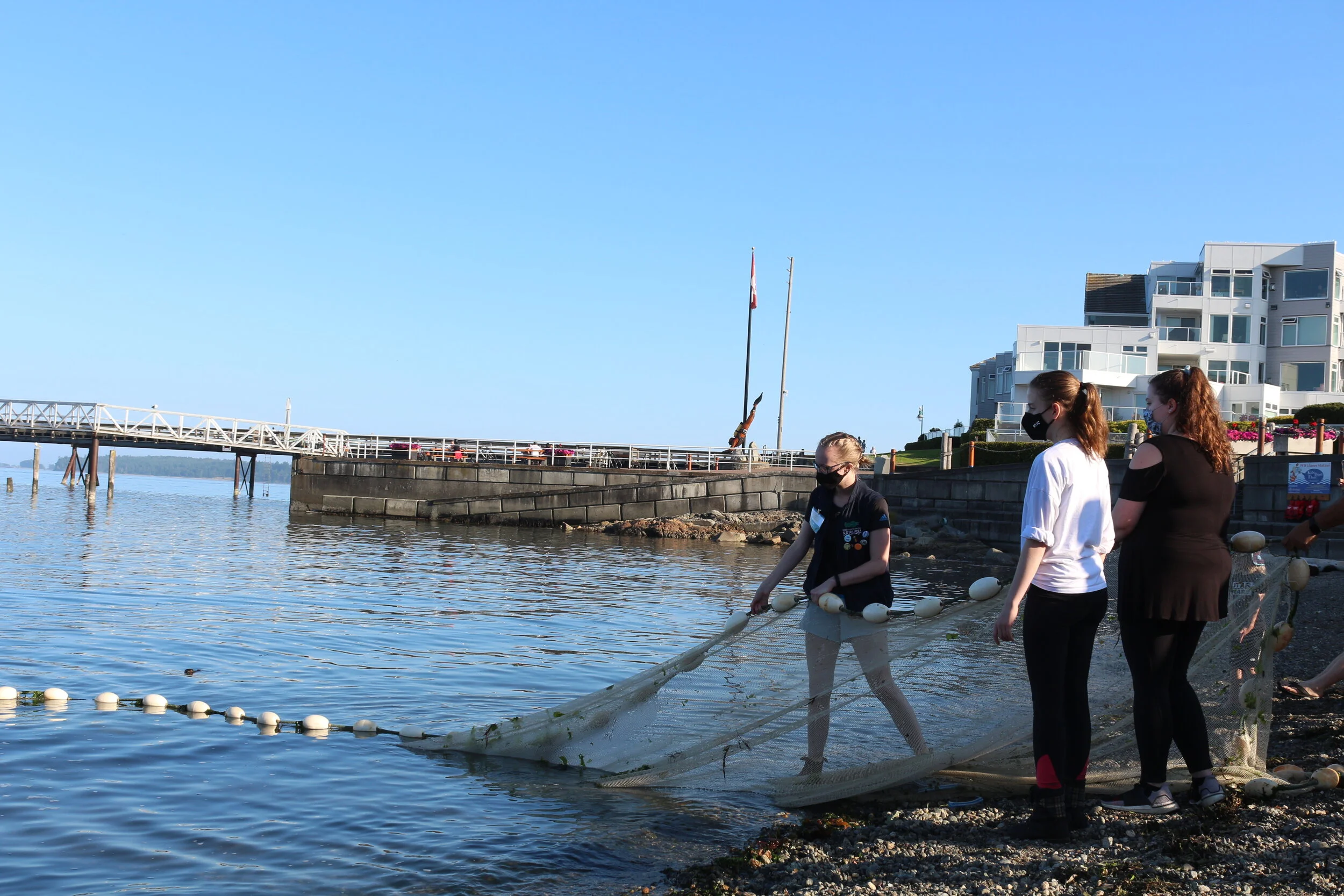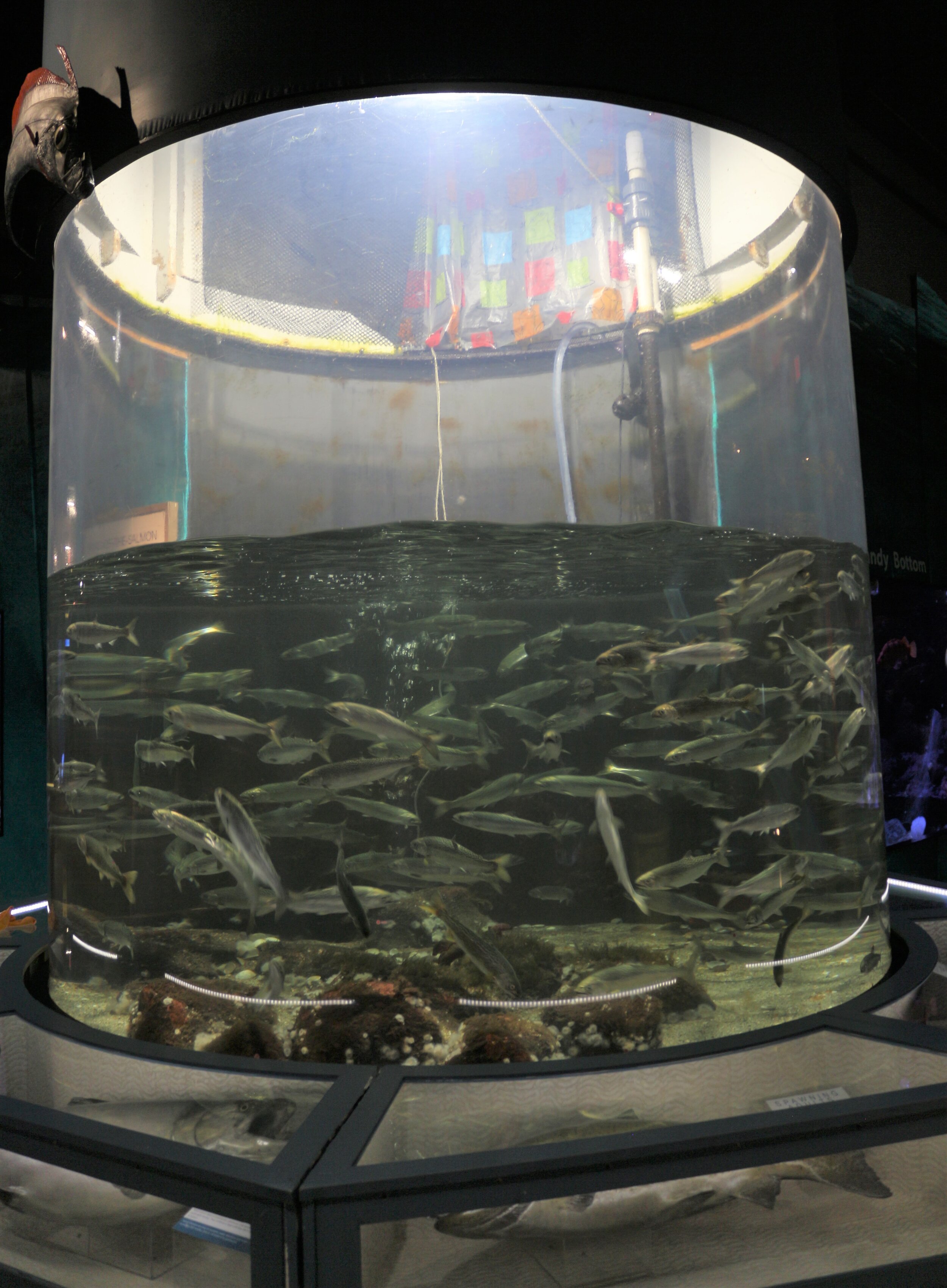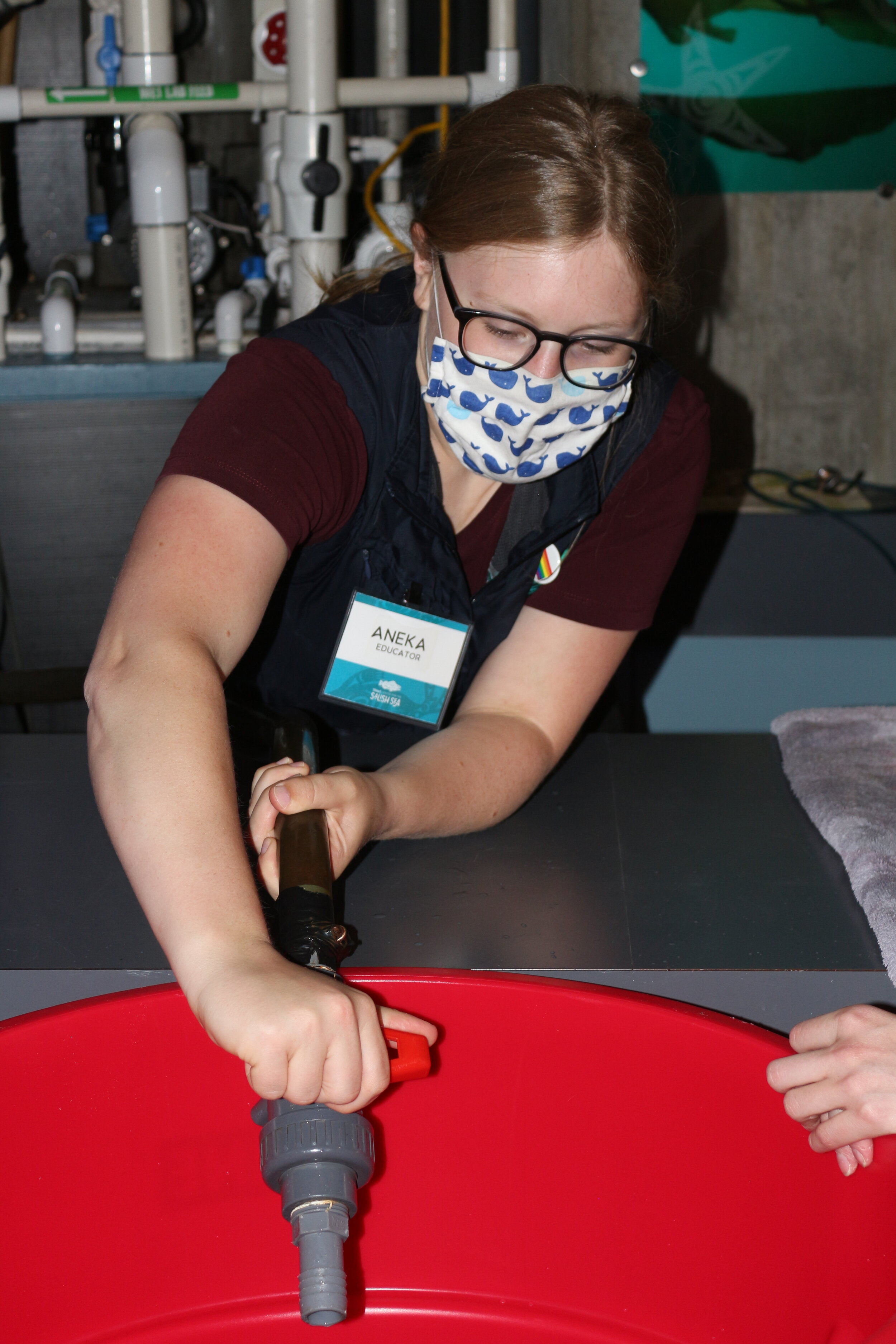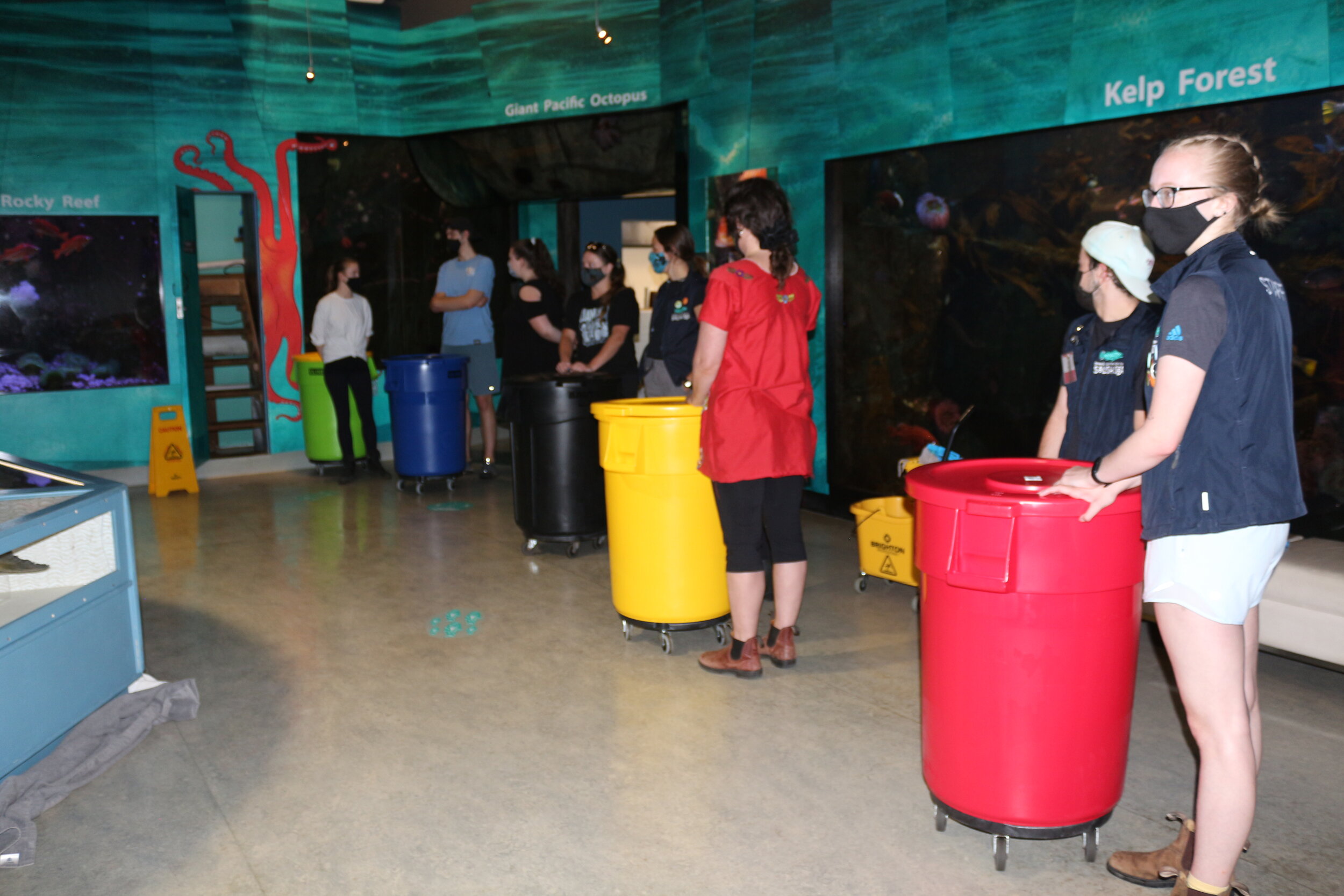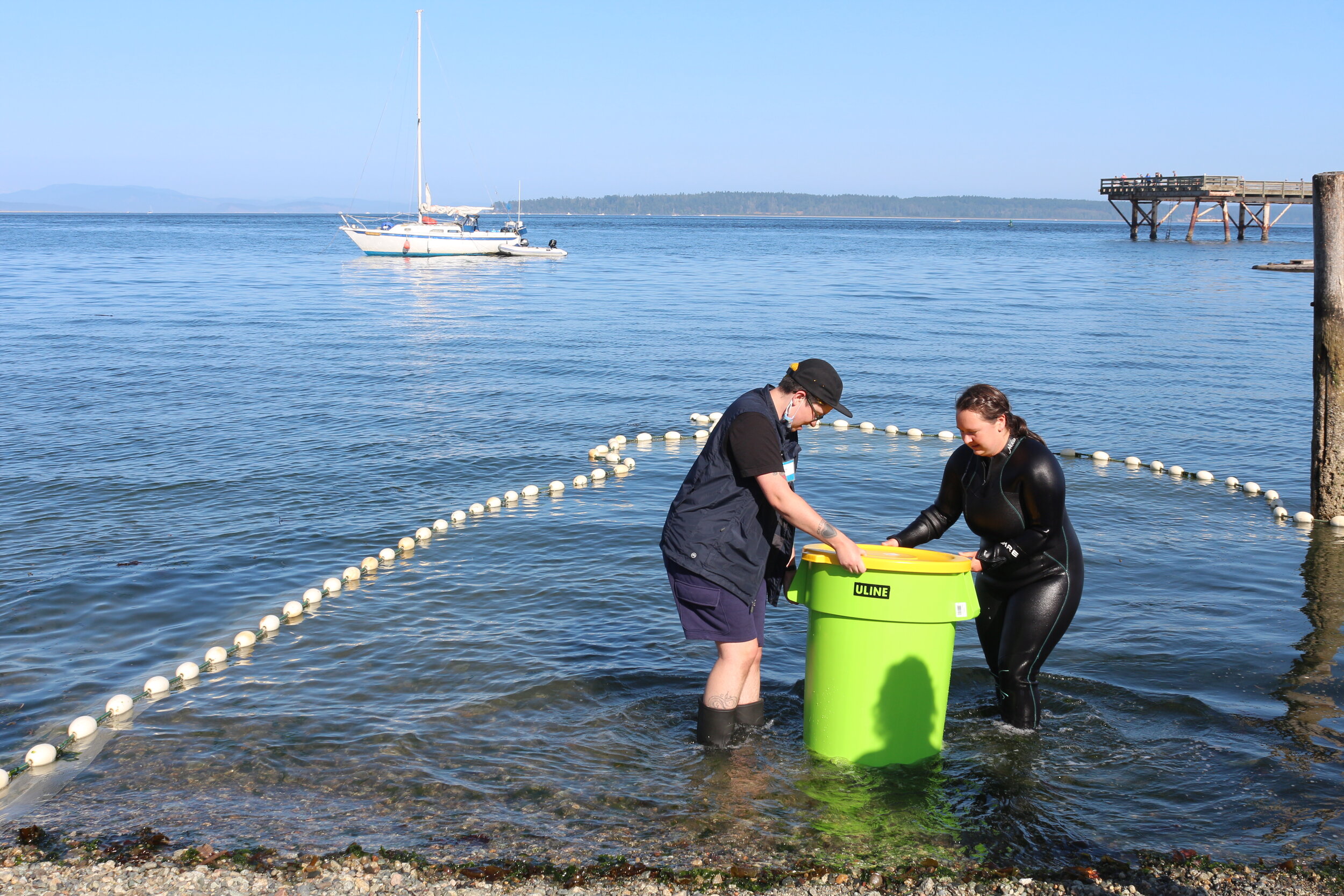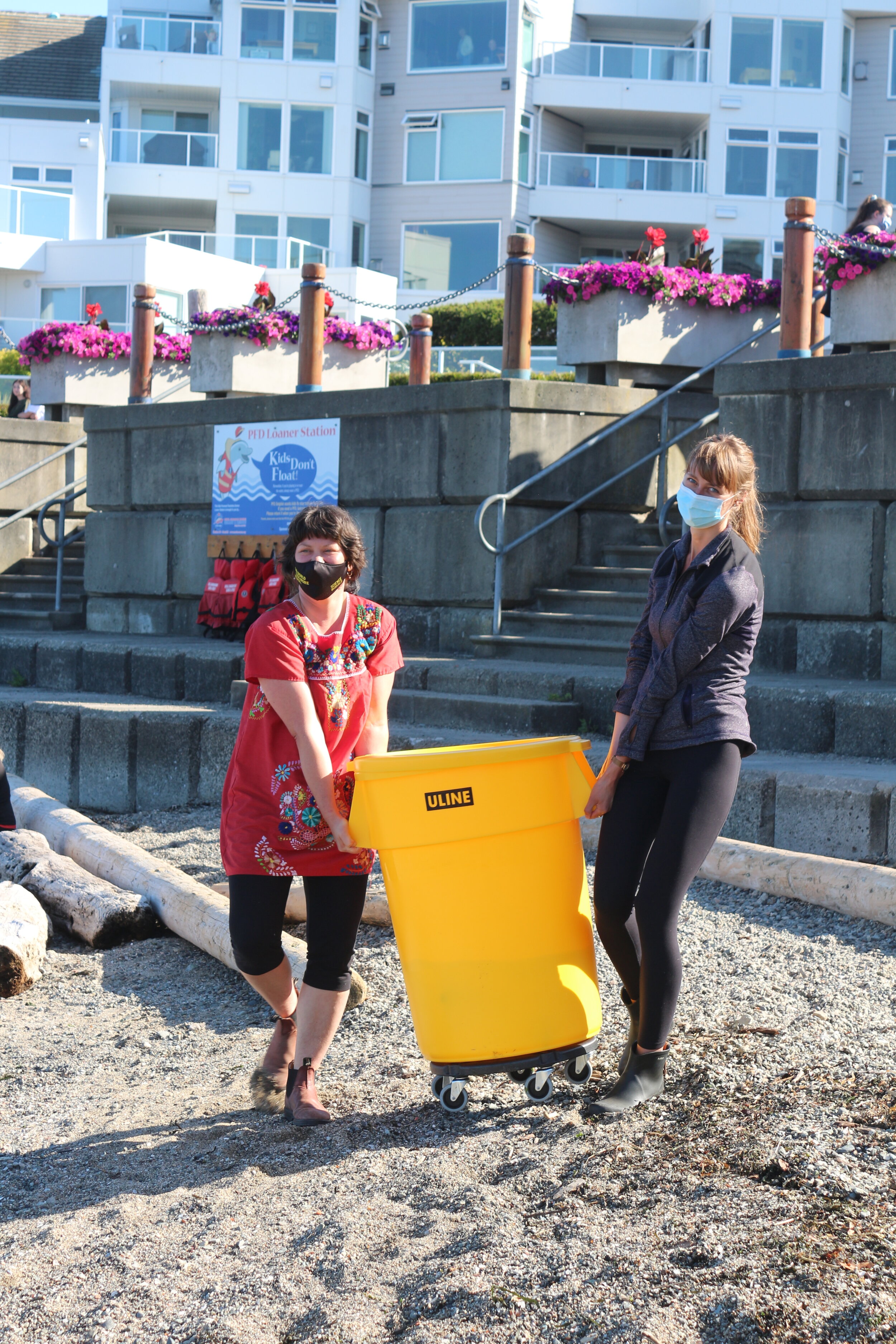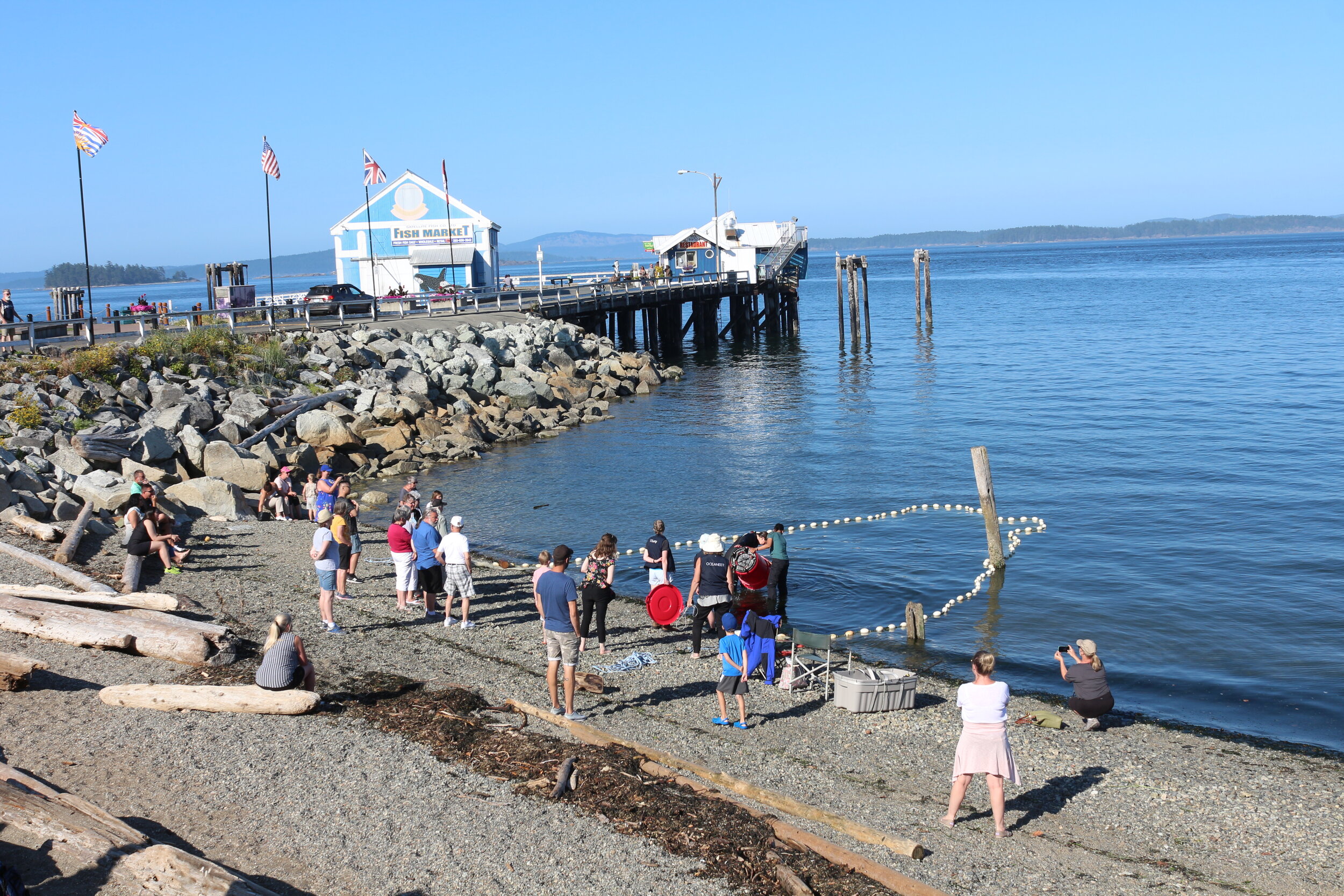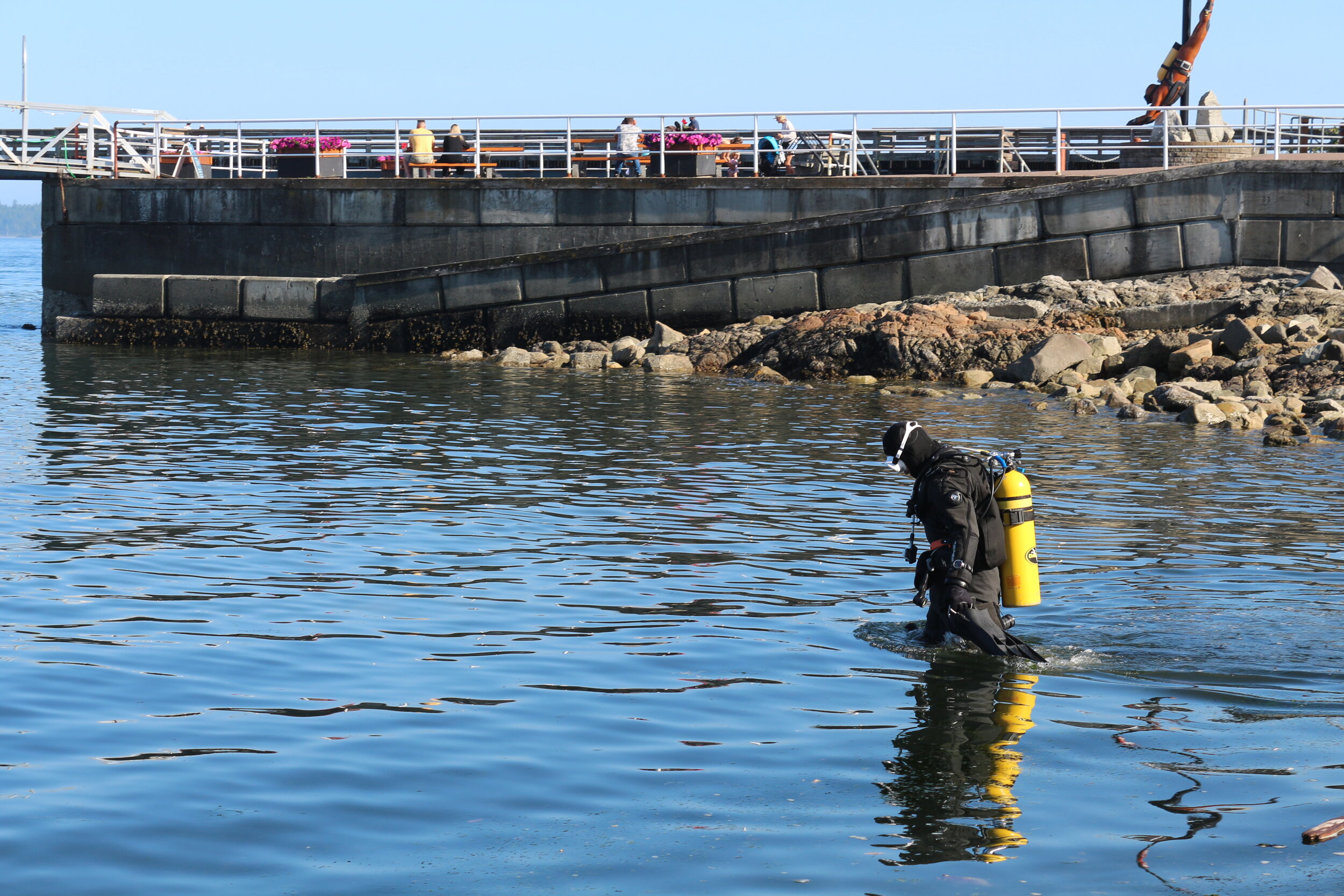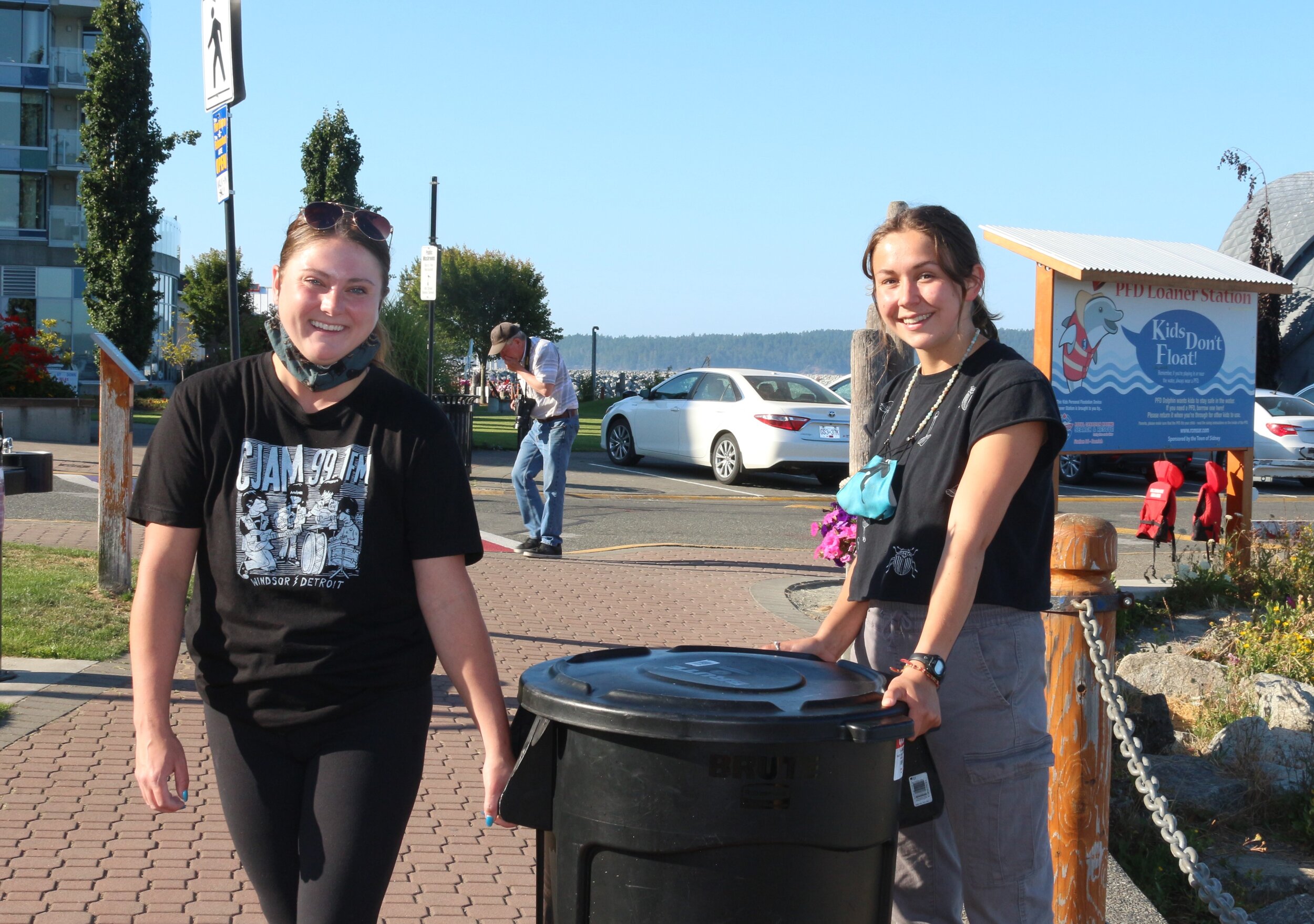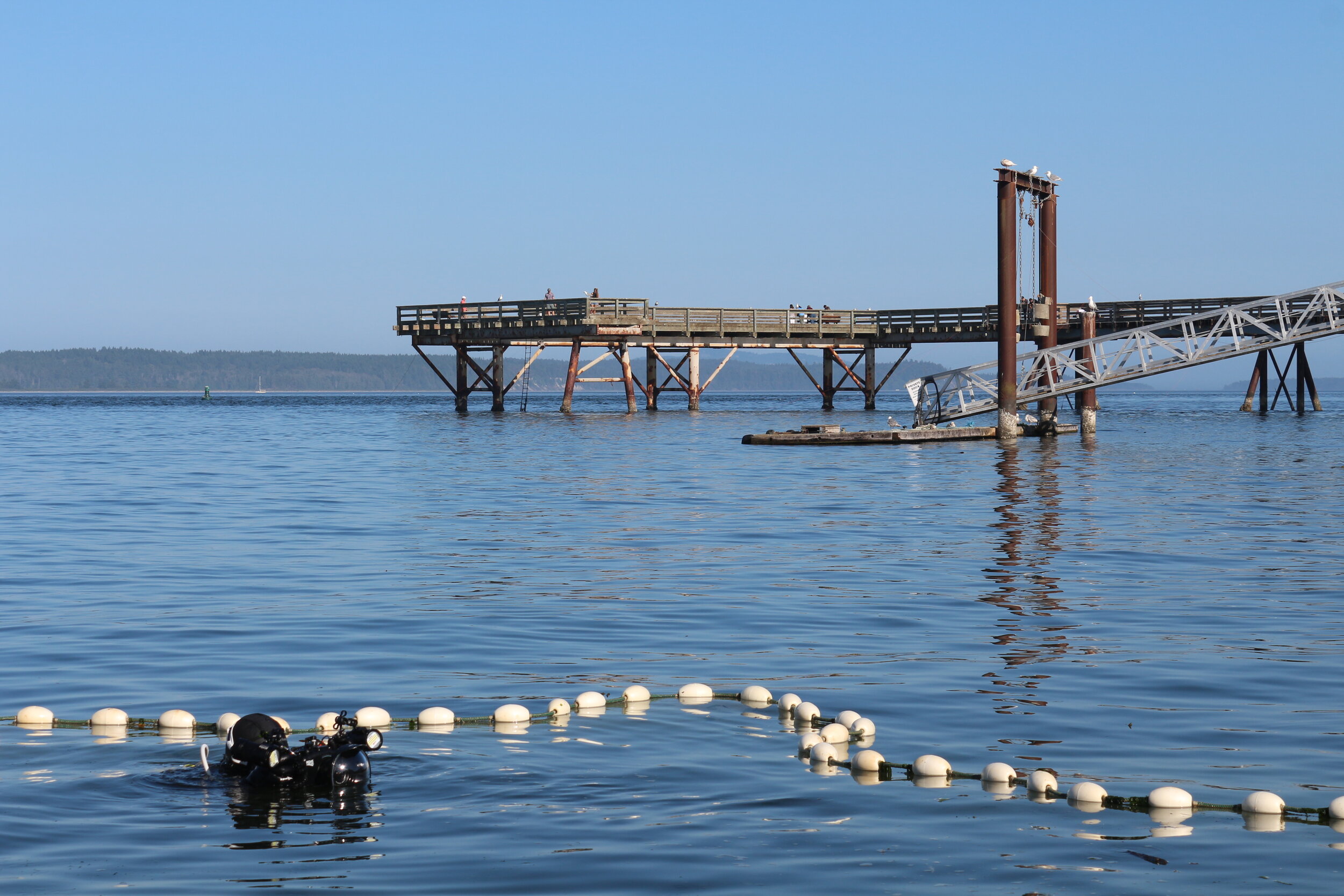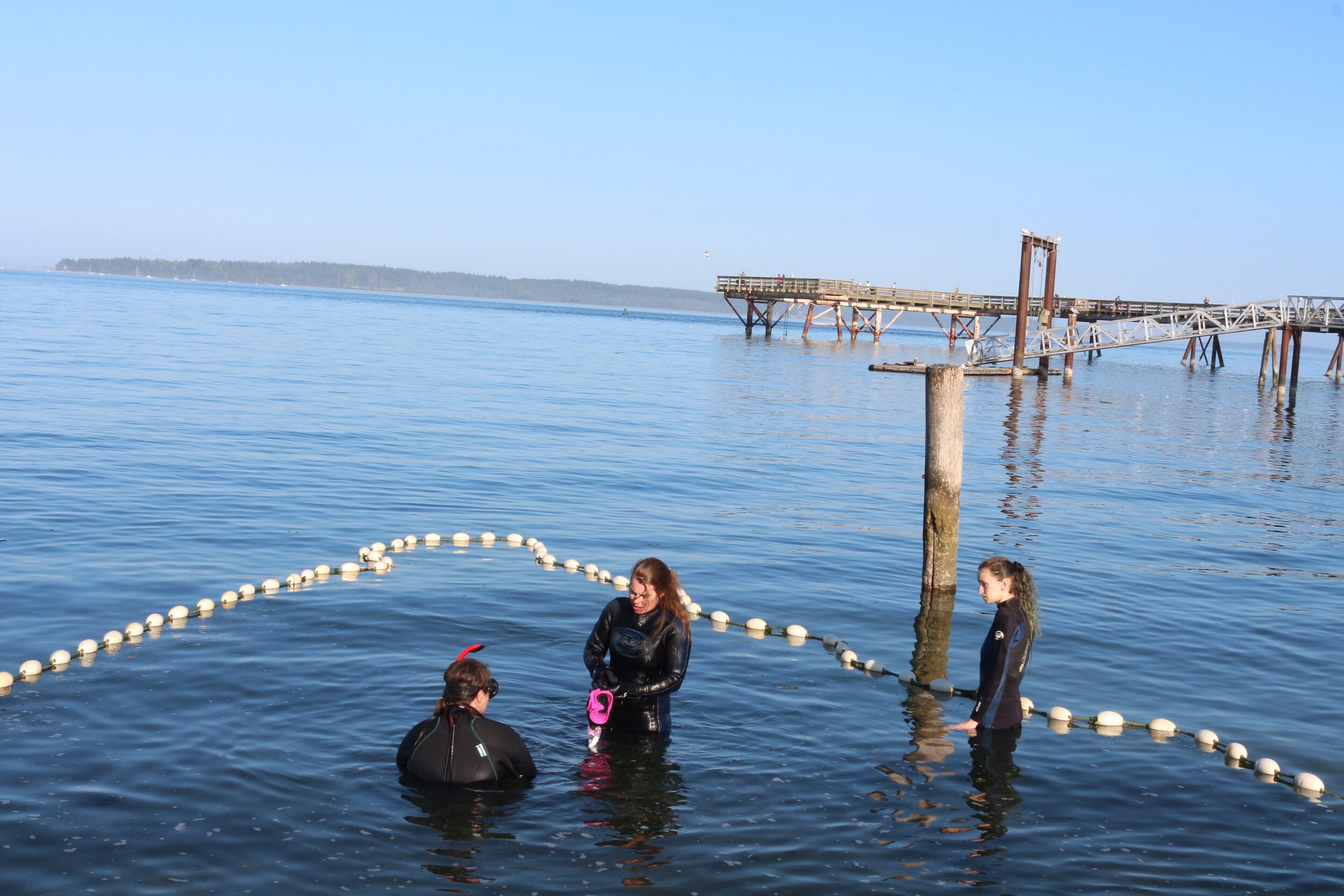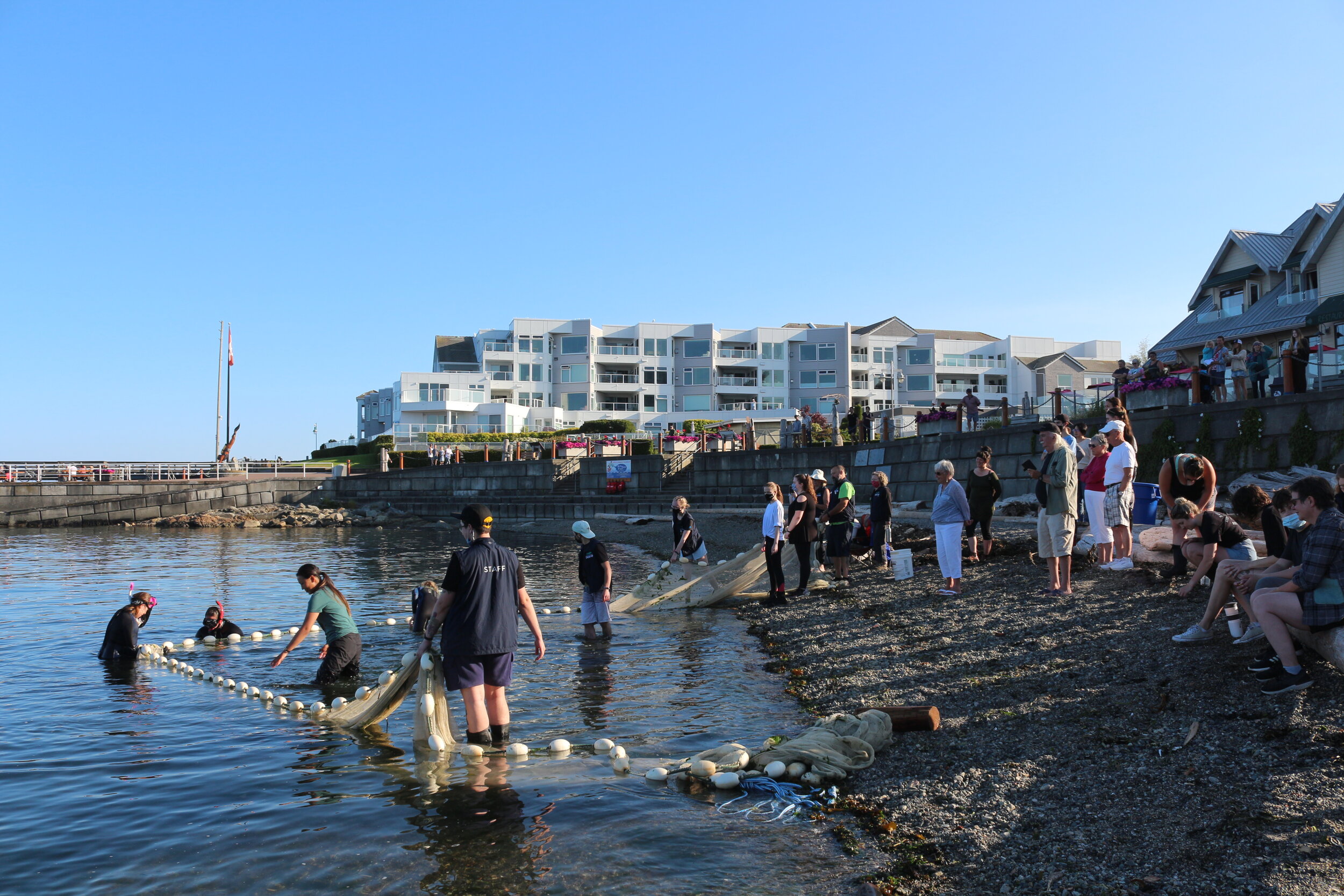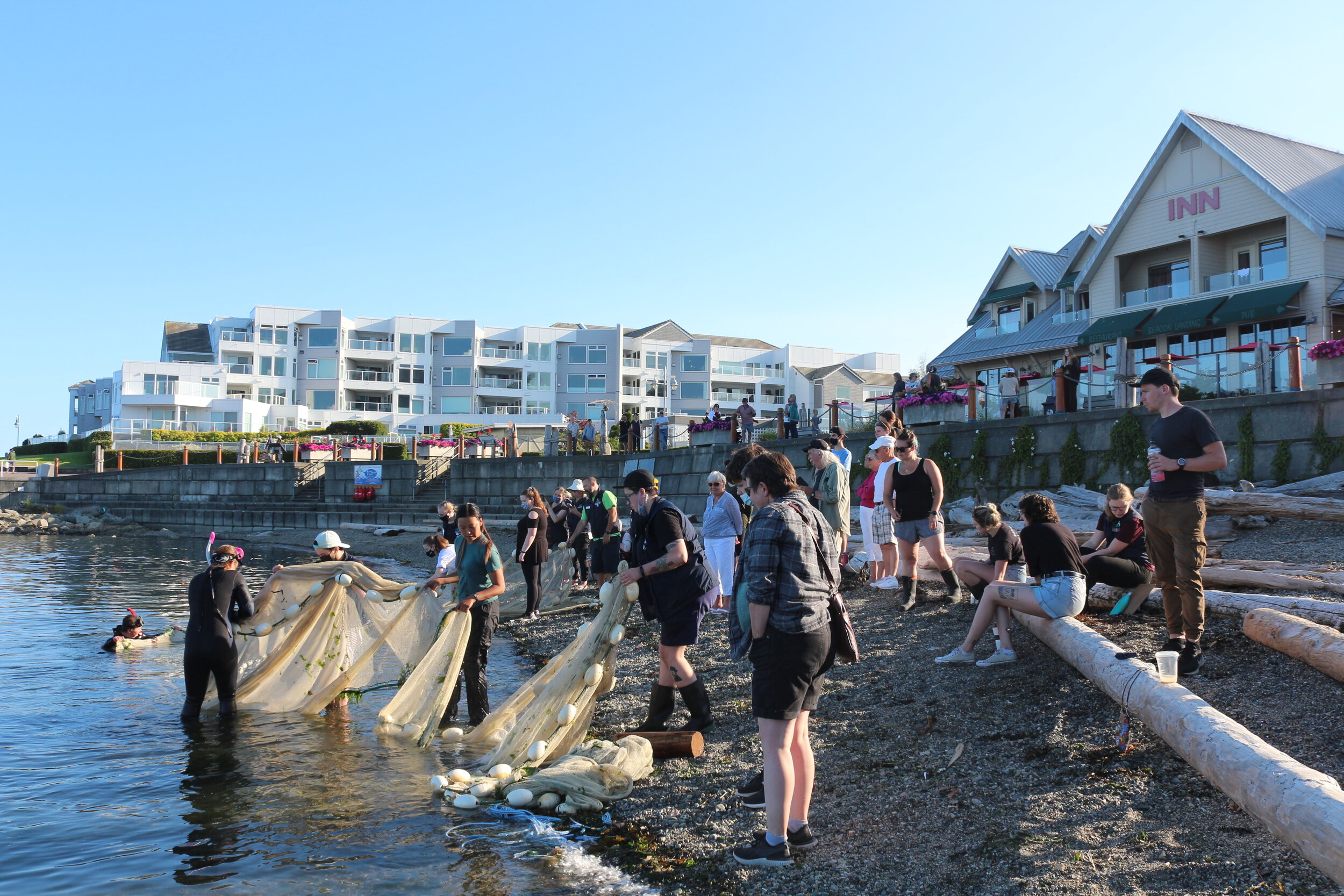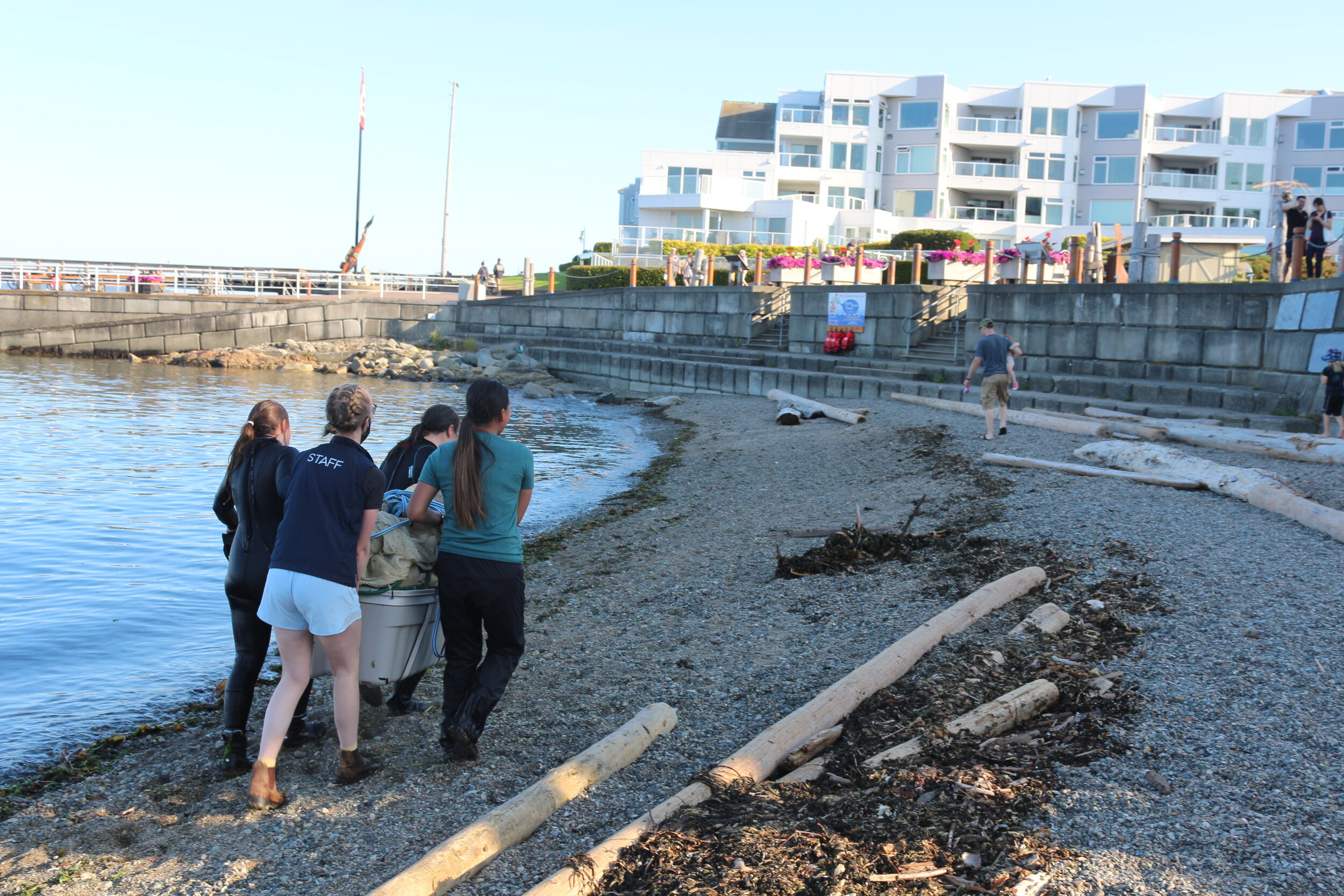September 23 is International Day of Sign Languages and Mack Ross, Assistant Educator reflects back on her summer project, Signing in the Salish Sea!
Being hired as an Assistant Educator in the summer of 2021 was an interesting time because most of the educational programming and general function of the Centre was being dictated by the restrictions of the COVID-19 pandemic. Having never visited the Centre before, my whole perception and understanding of the work being done by the Learning Team was through the lens of the pandemic. This meant that the Learning Team had to focus not only on how to provide an engaging learning experience, but how to accomplish this in a way which was safe for staff, volunteers and visitors. Working within COVID-19 restrictions naturally brought up many limitations such as contactless education, one-way flow through the Centre, and maintaining social distancing while providing excellent customer service. Although these protocols were implemented to ensure the health and safety of everyone in the Centre, they also posed barriers to accessibility.
One major accessibility concern was face masks and the barriers created for communication, particularly for those in the deaf and hard of hearing community. Face masks can make communicating a challenge as they obscure speech, hide facial expressions and eliminate the potential for lip-reading. In an attempt to counteract some of these barriers, I began learning some of the basic American Sign Language (ASL) signs that would be relevant to our Centre. I hoped that by learning some of the signs for common marine species and basic customer service interactions, that we could create a more inclusive environment for visitors.
I began this project by conducting research on current ASL resources pertaining to signing and science communication. I discovered YouTube channels focused on science related content such as Atomic Hands and their video series #STEMinASL. Through these YouTube channels, I became familiar with video components that were important to include, such as subtitles, visuals and side-views of sign demonstrations. Once I had a grasp on what to include in my videos, I created a list of relevant terms and species and began learning and practicing each sign!
The learning process was definitely my favourite part of the project. Each week, I learned five new signs and I would spend the next few days practicing each sign with my fellow staff members and volunteers. It became a really fun learning activity for everyone as we practiced our favourite signs and began sharing them with visitors. This process helped me memorize each sign for film day.
Aquarium - Moon Jelly - Ocean - Sea Star - Wolf Eel…were the first five signs I recorded with my crafty videographer Tina back in June. Our initial plan was to record the videos in the Centre and highlight the different species featured in each signing tutorial. Something we didn’t anticipate was the constant sound of water and the hum of the pumps affecting the audio. We also attempted filming outside, but quickly discovered that between the laughing children, passing boats and air traffic, Beacon Park was also too noisy. At first it took some creative thinking and a lot of patience, but by the end of the summer we were able to complete most signs in just a single take!
In total we recorded 16 different signs including many popular species in the Centre, like salmon, rockfish, octopus, and crab. I also included some of the charismatic marine mammals of the Salish Sea like seals, sea lions and orcas. Reflecting back on all the signs in this project, my favourite video tutorial was ecosystem! This sign is exceptionally interesting because the motion of the sign accurately reflects the meaning of the word.
As I worked to bring the ASL video project to a close, I decided to look back on my experiences during this project and reflect on the various successes and challenges I encountered throughout the way. To me this project was a success because it not only provided new educational content to explore, but it also offered an opportunity to learn and reflect on the accessibility of our Centre. Coming away from this project, I am now more aware of the accessibility considerations of the Centre and the steps we can take as a community to counteract some of these barriers.
Happy International Day of Sign Languages!
(All of the Signing in the Salish Sea tutorials can be found through our Facebook @salishseacentre.)


